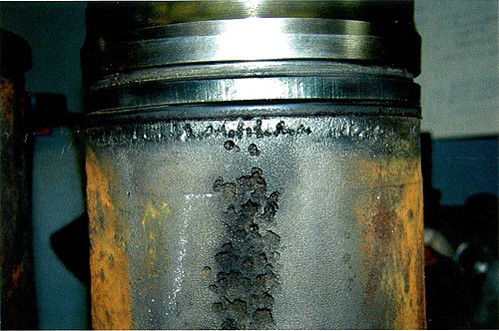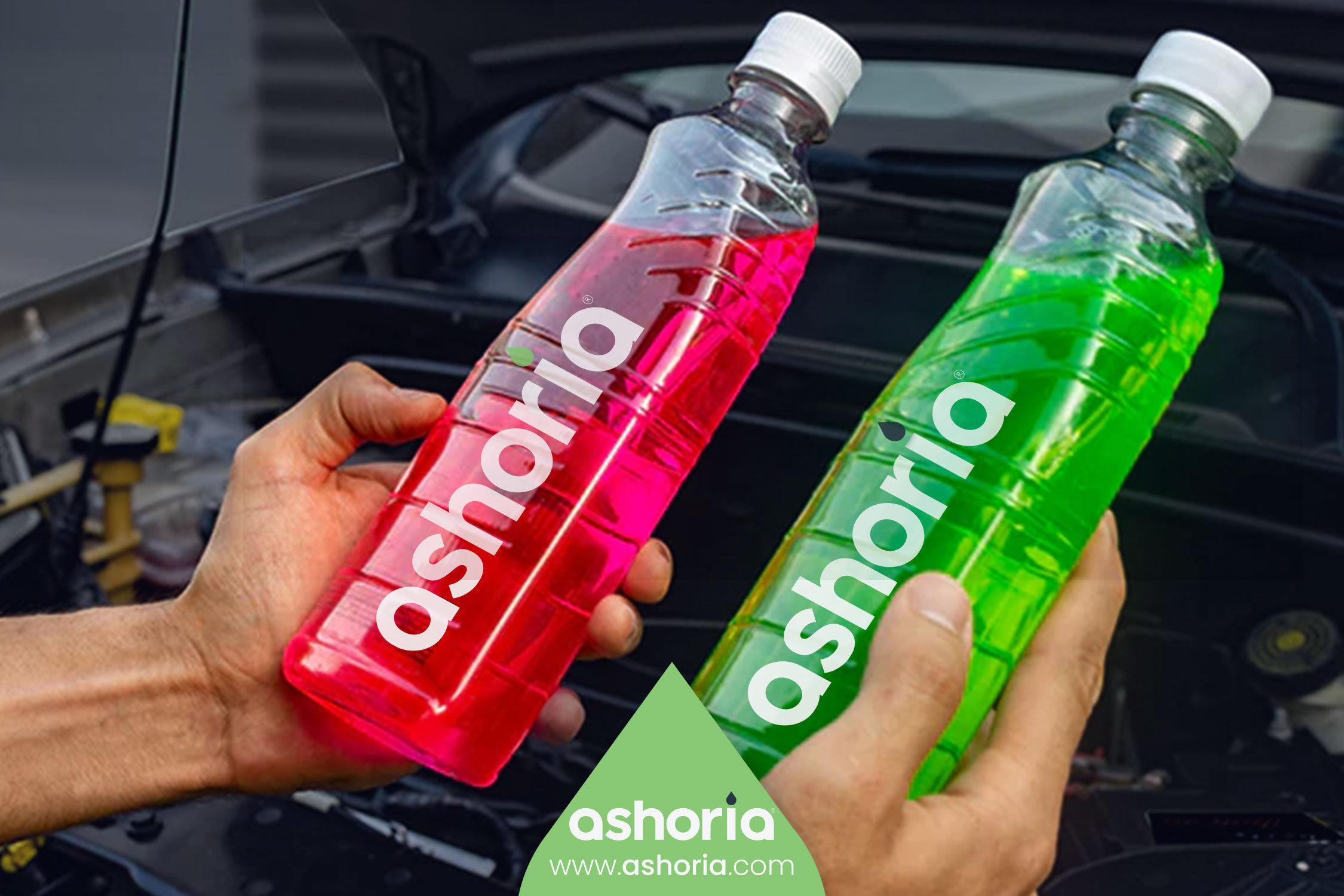What happens if you choose the wrong antifreeze?
Most motorists are careful when choosing engine oil, but most often they are superficial when choosing antifreeze. They usually choose a coolant based on price or color, without taking into account the recommendations of car manufacturers. But the wrong choice of antifreeze often causes problems with equipment. What kind of problems? Read this article.

Antifreeze is a car cooling liquid with a low freezing point. Its main purpose is to cool engine parts and other thermally loaded units, thereby preventing their overheating and failure. In addition, antifreeze allows you to operate vehicles in frosty weather, and also protects the cooling system from such negative factors as cavitation, scale and deposits, corrosion, increased wear of seals and the water pump.
Most antifreezes on our market are made on the basis of monoethylene glycol and distilled water. Then various types of additives are added to them, according to which antifreezes are divided into:
- inorganic (traditional) – these include TOSOL and its modifications;
- carboxylate;
- hybrid;
- lobrids.
| Inorganic technology | Carboxylate technology | Hybrid technology | Lobrid technology |
|---|---|---|---|
| Inorganic Additive Technology (IAT) BS 6580 TOSOL |
Organic Additive Technology (OAT) VW G12, VW G12+, Ford, General Motors, Land Rover, Jaguar, Komatsu, Isuzu |
Hybrid Organic Additive Technology (HOAT)VW G11, BMV, Fiat, Chrysler | Low Hybrid Organic Additive Technology (Lobrid, Si-OAT, P-OAT, NM-OAT)VW G 12++, VW G13, Mercedes since 2014, Asian cars |
Carboxylate or G12 . Antifreezes of this group are most often painted red. They contain carboxylic acids, which perfectly protect metals containing iron or aluminum elements from corrosion.
These antifreezes do not form a protective layer on all surfaces of the cooling system. Instead, they are adsorbed only in areas where corrosion occurs, preventing its spread.
Hybrid antifreezes ( G11 ). Usually colored green, turquoise, blue or yellow. Silicates and phosphates are used for their production. Unlike carboxylate antifreezes, hybrid antifreezes immediately form a protective layer on all of the system’s elements when they enter the system .
Lobride antifreezes ( G12++ ). They are mostly colored purple. They contain organic acids, silicates, and a small amount of mineral additives. In essence, this is a combination of hybrid and carboxylate antifreezes: they form a protective film, but the additives only work when corrosion occurs.
The main difference between lobrid antifreezes is their extended service life (but only when poured into a new engine).
IMPORTANT : When choosing antifreeze, do not rely only on its color. Carefully study the composition and type, and also take into account the manufacturer’s recommended standards and specifications specified in the vehicle operating instructions.
Standards for antifreeze
In order not to make a mistake in choosing the right antifreeze, you need to not only know the standards, but also understand what they mean . This is especially true if you have been using a product of one brand for a long time and then decided to switch to another.
There are 5 standards in total :
| Name of the standard | Transcript |
| BS 6580 | British industry standard. Minimum requirements for antifreezes in terms of anticorrosive properties and crystallization temperature. |
| ASTM D 3306 | “Specification for Light-Duty Ethylene Glycol-Based Automotive Coolant ” (ASTM D 4656 – Diluted, Ready-to-Use). Antifreezes that meet this standard are suitable for use in passenger cars and light trucks . |
| ASTM D 4985 | “Specification for Low Silicate Ethylene Glycol Engine Coolant for Heavy Duty Engines ” (ASTM D 5345 – Diluted, Ready to Use) requiring the initial addition of Supplemental Coolant Additive (SCA). |
| ASTM D 6210 | Standard specification for fully formulated glycol-based coolants intended for heavy-duty engines (Heavy Duty – HD). This specification is designed for high-output diesel engines and includes high cavitation control requirements and requires the addition of nitrites in the SCA additive. |
| GOST 28084-89 | Domestic standard for cooling liquids (TOSOL). Does not include any operational tests, only laboratory tests. |
Mistakes when choosing antifreeze
When choosing a coolant, drivers most often make one of 4 mistakes:
- They are guided only by color . Initially, all antifreezes are colorless. They are given color by dyes, which are added to give the liquid “individuality”. The same antifreeze can be both blue and red. Therefore, its properties do not depend on color.
- Choice by price . Often budget antifreezes are made from cheap substitutes for high-quality additives and base. Therefore, low price is not the best guide.
- The engine load class is not taken into account . To do this, you need to know the standards specified above. If you drive around the city, i.e. the car has “light operating conditions”, then you focus on the ASTM D 3306 standard. But if these are “heavy conditions”, for example, off-road, long trips, then on ASTM D 4985 and ASTM D 6210.
- Do not take into account the recommendations of the equipment manufacturer . Do not forget to clarify which antifreeze is recommended by the manufacturer of your car. He knows the qualities of the car and the features of its operation better.
Problems that arise when choosing the wrong antifreeze
What is the danger of incorrect selection of antifreeze? According to statistics, from 22 to 40% of engine malfunctions are related to problems in its cooling system caused by incorrectly selected antifreeze.
The most common problems in this case are:
- Corrosion
- Precipitation
- Blocking channels with gel
- Cavitation
- Freezing
Corrosion
This is the destruction of metals and alloys as a result of reactions that occur when they come into contact with the environment.
Its products destroy cylinder liners and the pump, and clog the narrow channels through which the coolant flows. As a result, the normal operation of the cooling system may be disrupted, which will entail an increase in the operating temperature of the engine and, as a consequence, increase the risk of breakdown.Precipitation
This problem is faced by those who use inorganic antifreezes, as well as concentrates in case of their improper dilution. They are characterized by the formation of sediments and insoluble particles.

Sediments clog radiators and other elements of the cooling system, impairing their heat transfer, which can lead to engine overheating, including the appearance of scoring* on the cylinder walls, oil coking and piston ring sticking.
* Scoring is damage to the cylinder or piston wall. It occurs when the distance between these elements decreases below the permissible level, causing them to come into contact.
Blocking channels with gel
Car owners who use inorganic and silicate-containing antifreezes face the problem of gelation. After about 2 years of operation, such cooling liquids begin to form insoluble gels that block the channels, worsening heat exchange. And the result is the same: engine overheating, and subsequently its failure.
Therefore, after the specified period, it is better to completely replace the antifreeze.

Cavitation
This is the process of forming steam bubbles in fast-flowing liquids. They burst at a pressure of 1000 atmospheres and at a huge speed. Their micro-explosions gradually destroy the metal, so with prolonged cavitation the cylinder wall can get through damage.

Antifreezes containing nitrites and molybdates provide the best protection against cavitation. As a rule, these are carboxylate, hybrid and lobrid products.
Freezing
You will encounter this problem if you pour low-quality antifreeze or water into your car. But in the case of antifreeze, nothing will happen to the engine: when it hardens, it will not expand, which means it will not rupture the cylinders.
However, starting the engine with frozen antifreeze can cause other damage to both the cooling system components and the engine as a whole. To prevent freezing, we recommend choosing high-quality antifreezes with an optimal concentration of monoethylene glycol and water.
What conclusion can be drawn from all of the above? When you choose antifreeze, do not look at the price and its color. Focus on the manufacturer’s recommendations, the operating conditions and engine loads. And then you will choose the coolant that is best suited for servicing your car, and you will not encounter the problems described in this article.

